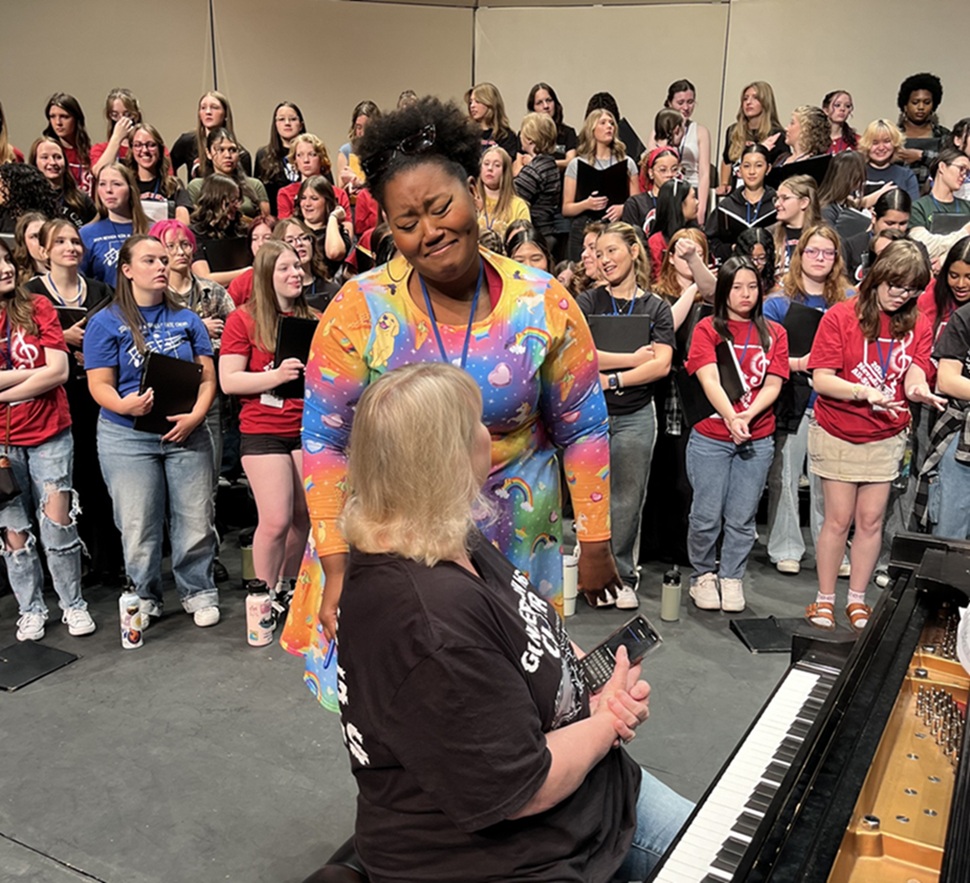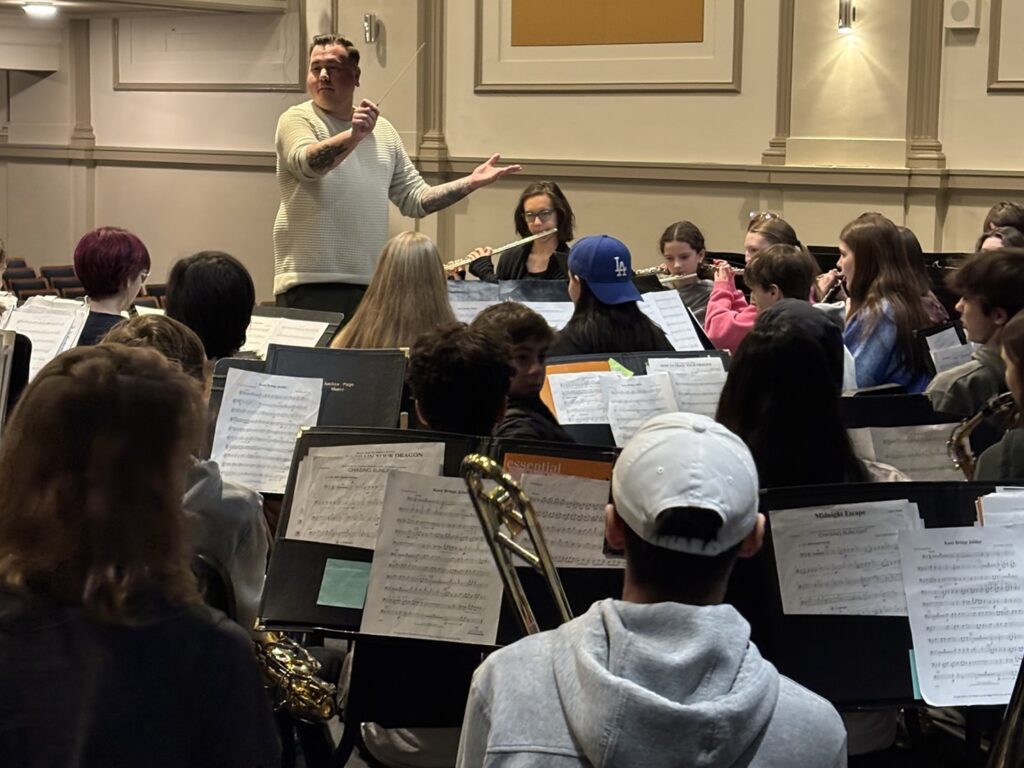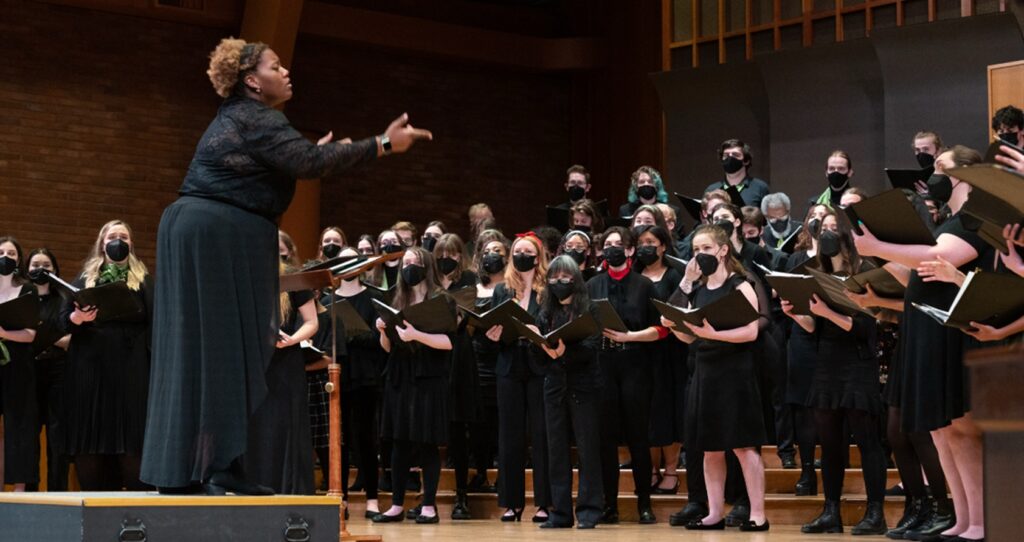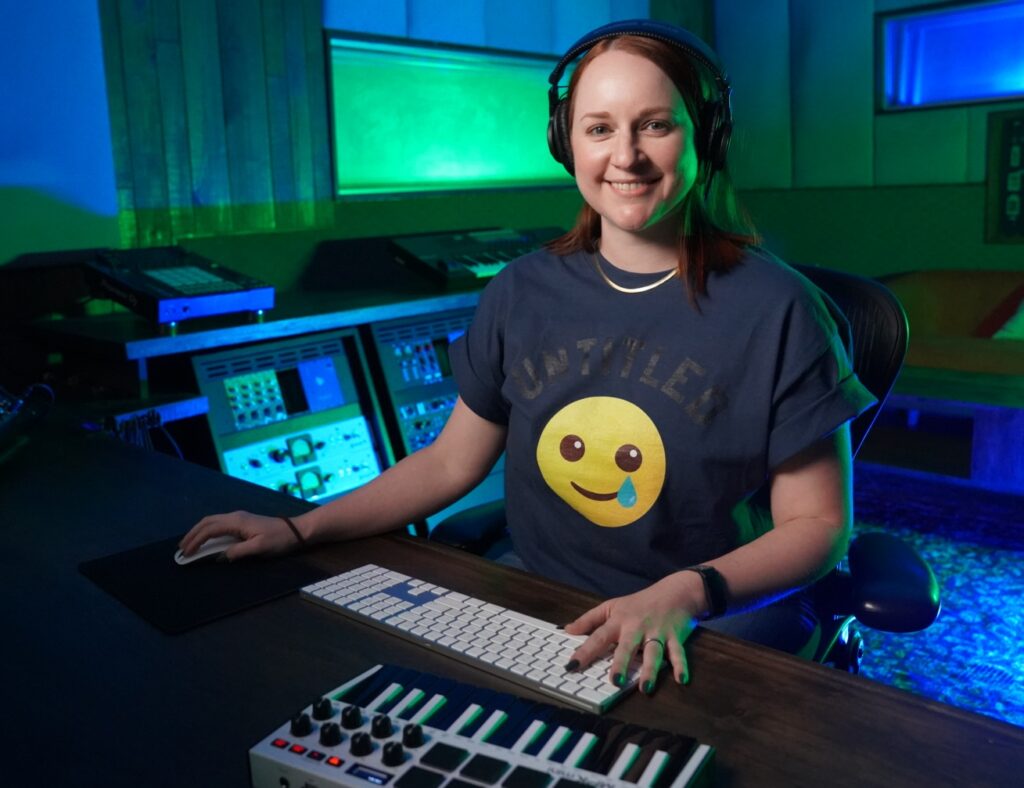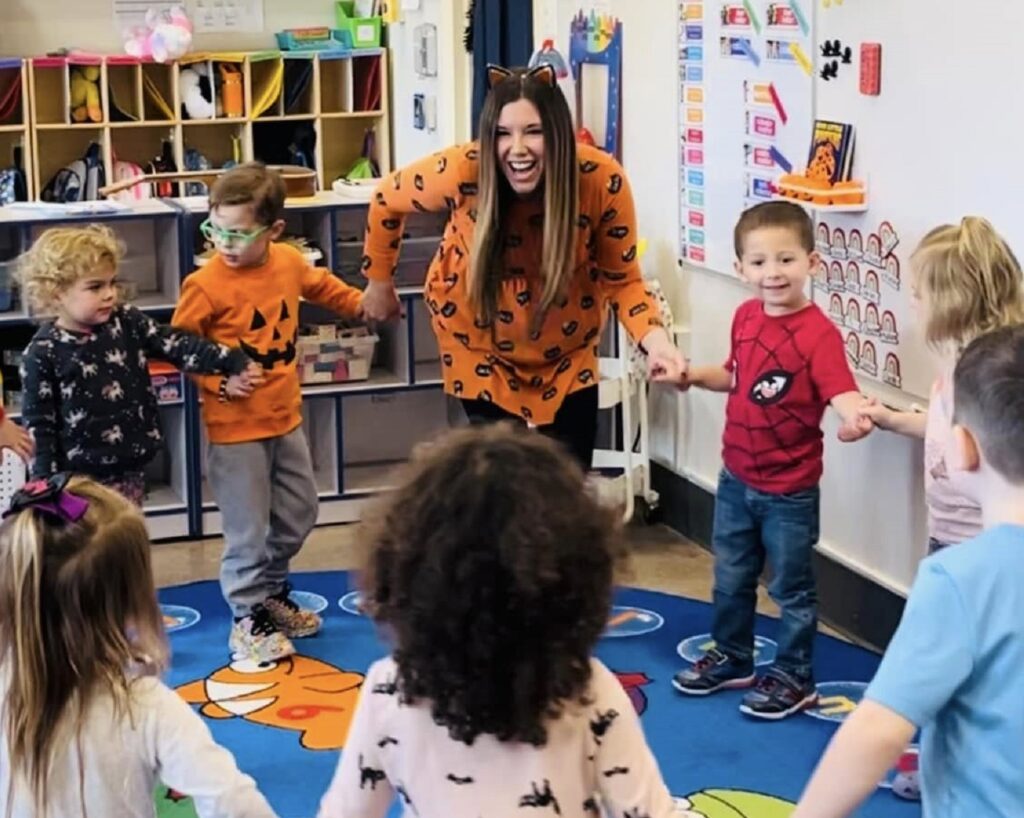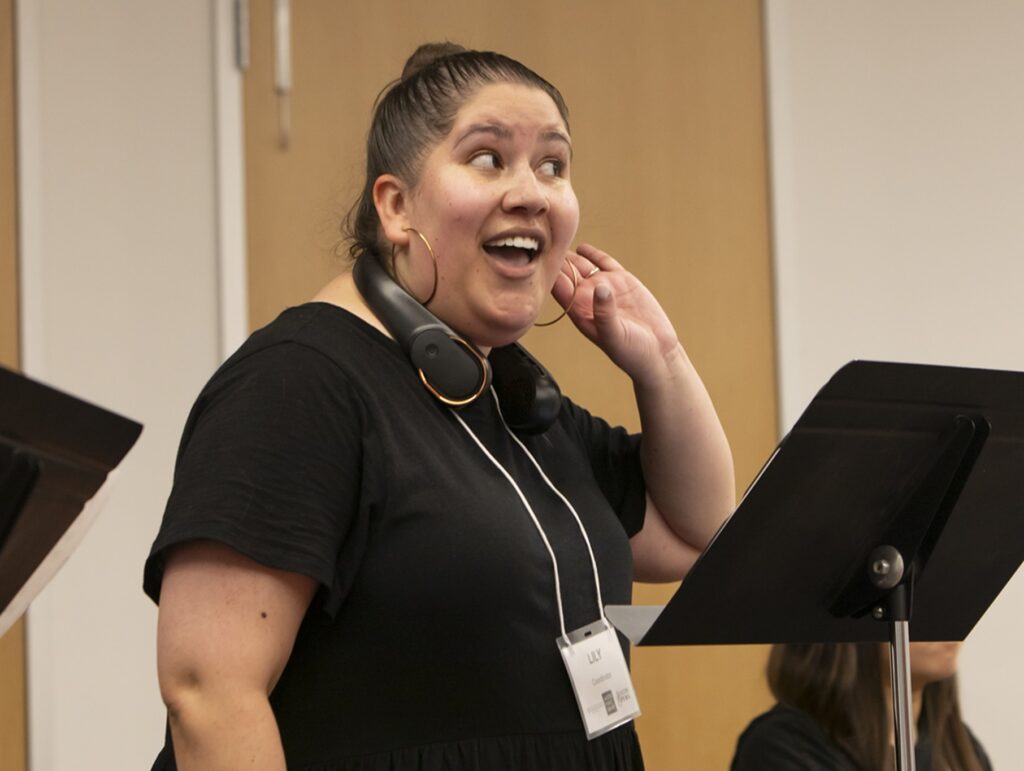Tagged Under:
Five Steps to Build Brave Music Classrooms
Focus on community-centered values, authenticity and a positive atmosphere to create a safe and creative environment for students.
As music educators, we want our students to achieve the highest level of musical success possible. We spend much of our time honing our pedagogy and focusing on the best way to teach notes and rhythms. As important as this work is, I believe that our students will achieve high levels of success if we focus on one simple thing: Making our classroom a brave space for music-making.
Teaching students to be brave involves careful consideration of how we create the physical and emotional classroom space, how we teach students to speak to and about each other, and how we push their learning edge. Over my years as a middle school music educator, I have developed tools to help establish and create this brave space with a new group of students each year. By keeping an emphasis on community-centered values, authenticity and a positive atmosphere, it is possible to help all your students become brave, talented and joyful music-makers.
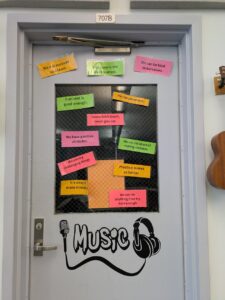
1) Curate the Classroom Environment
Classroom Expectations: Creating a brave space for music-making starts with the physical and emotional curation of the classroom environment. A brave emotional space is created when you set the tone for the year with your classroom rules. I like to frame my classroom expectations with a positive lens that centers on community care.
My classroom rules are simple:
- Care for the space.
- Care for each other.
- Care for yourselves.
- Have fun!
I intentionally keep these statements open-ended because my “first-day-of-school” activity is to define them. When asked what it means to “care for the space, each other and ourselves,” my students always land on the same messages — take care of the instruments (don’t break them), one speaker at a time, follow the “Golden Rule,” and speak kindly to ourselves even if we make mistakes.
That last one is my favorite, and one that I refer to constantly throughout the school year. When you teach your students to speak kindly to themselves, they feel more emboldened to try new things and are less afraid to make mistakes.
From Day One of music class, my students know that they can feel safe to make mistakes and are encouraged to be brave and bold in their mistakes. All while learning from those mistakes. I always say, “If you’re going to make a mistake, make a big one so we know you meant it!”
I repeatedly say this to impart the message that mistakes are encouraged and celebrated because they are important parts of the learning process. This message comes in handy particularly when you ask students to take the mic to sing or to perform a solo. When they lead with community care in mind, they know that their musical skills will be celebrated even as they are evolving.
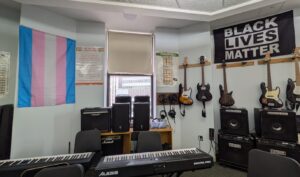

Classroom Decor: Another way I curate my classroom space to be one of acceptance and bravery is by hanging different identity flags around the room. It’s critical that our students are able to identify adults and spaces that are accepting of their full identities. One way to signal this safety from the moment they step into the room is by including identity flags in your space.
For me, this most often includes pride flags, Black Lives Matter flags and an indigenous land acknowledgement. When students ask me to include a flag from their home country, I am happy to find a place for it in my classroom. This simple act of decorating the space with intention creates a welcoming environment in which all students can feel comfortable being their true selves.

2) Lead Intentional Community-Building Activities
Once the classroom environment has been curated to support our goal of bravery, it’s time to reinforce it by engaging in direct community-building activities. My favorite activity is to create musical affirmations with my students. There is power in our words, and teaching students to speak words of support, success and bravery into the musical space creates a joyful environment. These affirmations build on the community care elements of my classroom rules and allow students to start thinking about how they will put our musical community first when they step into my classroom.
I allocate a full class period to engage in a musical-affirmation lesson. While this does take away from rehearsal time, this is one of those moments when creating community can and should take precedence. To teach about affirmations, I follow a simple process:
- Define and Brainstorm: What are affirmations and what role can they play in our lives? What are some examples of affirmations?
- Create: What would a music-focused affirmation sound like? Independently write a musical affirmation on an index card.
- Share: Capture the responses on chart paper, slide show or whiteboard. Some affirmations that students have created include:
- Everyone in the band matters.
- It’s okay to make mistakes.
- Never give up.
- I am capable of learning anything.
- Connect: Identify common themes and create a classroom set of music affirmations.
After this lesson, we practice speaking our affirmations out loud by sharing them with each other. For this activity, I ask my students to stand in a circle and present a talking piece. Students toss the talking piece to another member of the band and reads an affirmation to them. For example: “You (student’s name) are an important member of the band” or “You are brave.”
This activity is powerful. It is one thing to say an affirmation to yourself, but it’s quite another to hear your peer say it to you. In these moments, students are breaking down social barriers between each other and affirming one another’s value to the musical community. After the day is over, I capture the musical affirmations and post them on the door inside my classroom. They are visible and central to the room, so students are always reminded of how to be kind to themselves and others during the learning process.

3) Be a Relentless Cheerleader
You have now curated your classroom space, created affirmations and helped your students understand that they are all on the same team, now it’s your turn to be their biggest cheerleader. To be their biggest fan, I deeply believe a few things:
- Progress is always more important than perfection.
- Their best is good enough (even if their best is not what I had in mind).
- Mistakes are always okay.
I do not focus on perfection in my classroom because I believe that an emphasis on perfection breeds stress and anxiety that will ultimately harm our students’ mental health and desire to make music in the long run. I want my students to leave my music program knowing that their effort and hard work was always valued over their final product. The best part of having this mindset is that students almost always meet or exceed performance quality expectations when they are given this space to grow and learn in a judgment-free environment. I have found that students take on more challenging repertoire and push themselves to achieve higher levels of musical excellence simply because they are safe to do so.
My personality while teaching is one of a cheerleader. Bright, excited and relentlessly positive. I will tell students when something they are practicing can be improved and how to practice improving, but it is always through the lens of positive growth and encouragement. The phrases above are great places to start when encouraging your students, and they are easy for them to repeat, especially when they get stuck or frustrated. I remind students to always remember the classroom expectation of “care for yourself” and help them reframe their frustration into positive thinking.

4) Guide Students Out of Their Comfort Zone
Once students are used to being in a music space where their mistakes are celebrated, their identities are included and they believe in their progress, it’s time to encourage bravery and push them out of their comfort zones. We can push our students out of their comfort zones by giving them harder repertoire, assigning a new player a solo, challenging them to take on a new instrument, or through performing for others. My personal favorite way to encourage bravery while always improving musical performance skills is through structured peer performances.
In this scenario, one group of students performs for the entire class or another small group of students, and they receive feedback from their peers. Before the performance days, we spend time defining the term “constructive feedback” and practice giving feedback in ways that are supportive and positive. On performance day, students are expected to both give and receive feedback, and ALL students perform for each other. The first-time students experience this activity, they are nervous and worried about sharing their progress with peers. Once they have experienced it a few times, however, students are excited to receive feedback and support from their peers and begin to shed their idea of perfection. They begin to enjoy the process of sharing an unfinished product with others, which makes them become braver music-makers.

5) Have fun!
If we are not having fun making music, what is the point? Learning music can be challenging and frustrating at times, but the goal should always be to access joy making music independently or with others. It is OK to laugh with our students and at ourselves in front of our students. It is OK to have a karaoke break sometimes, or to let our students share about an awesome concert they just attended or play their new favorite song for the class. Each day in your classroom should be infused with joy!
Once we have established a positive classroom environment, given students opportunities to empower themselves and others, taught them to push their comfort zone and left room for joy, we will have created a brave musical space where students want to continue making music long into adulthood. It is a joyful endeavor to cultivate lifelong music-makers, and these steps are a launching point to achieve that goal. Happy teaching!










